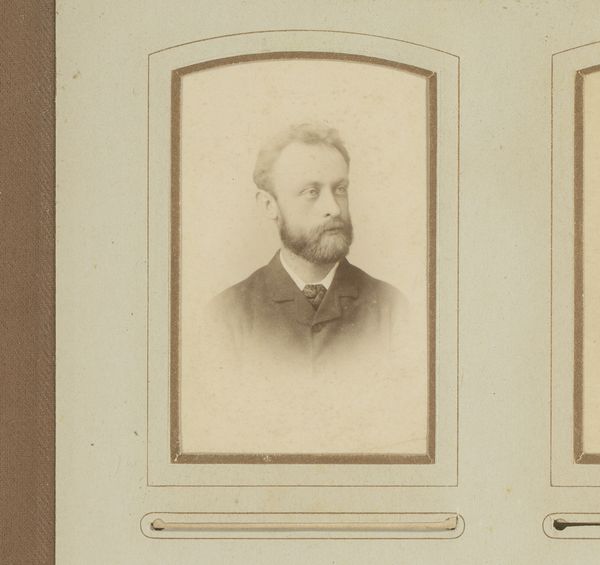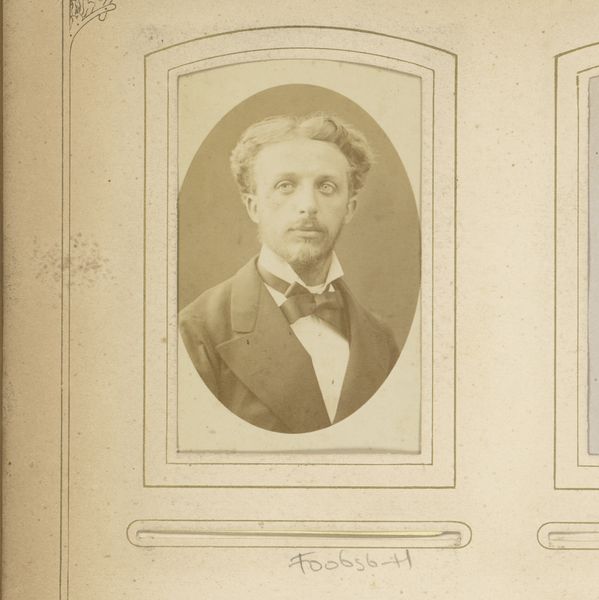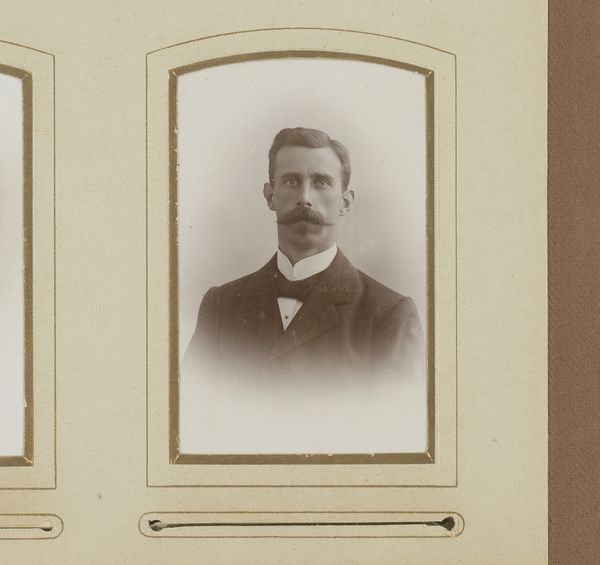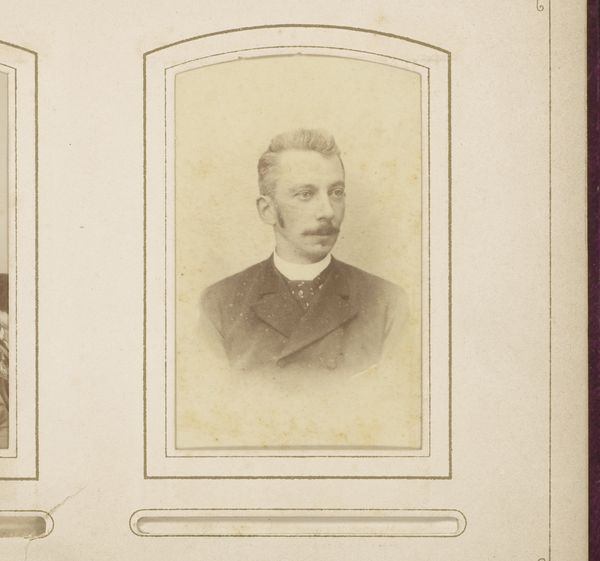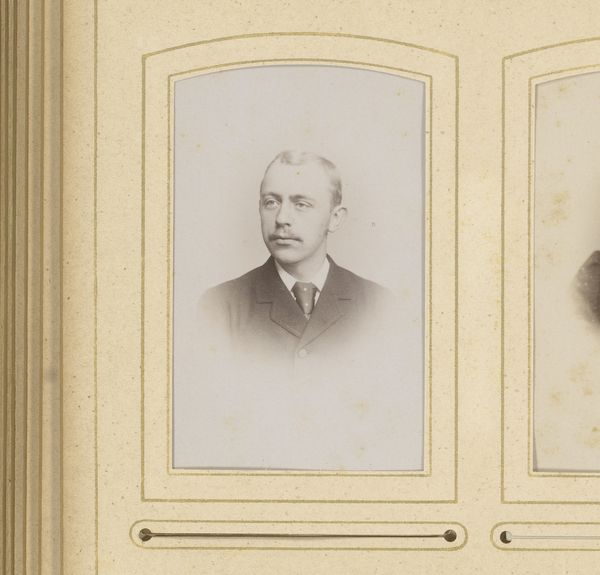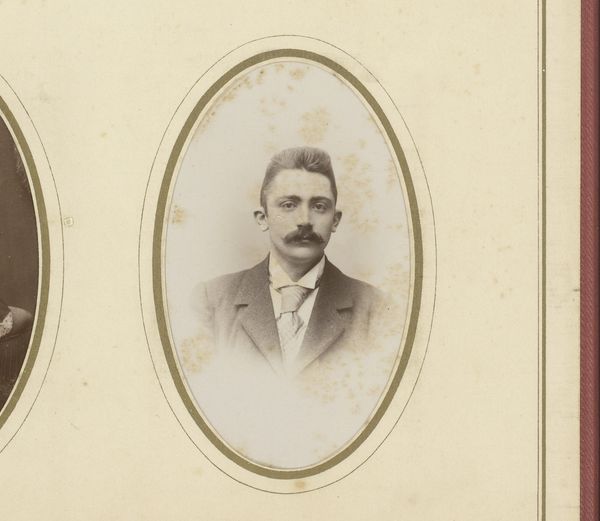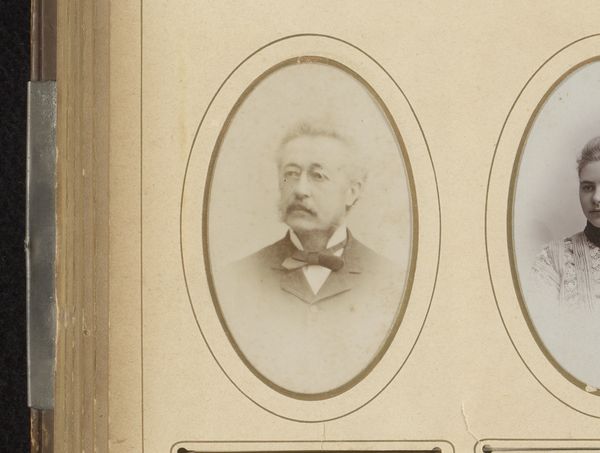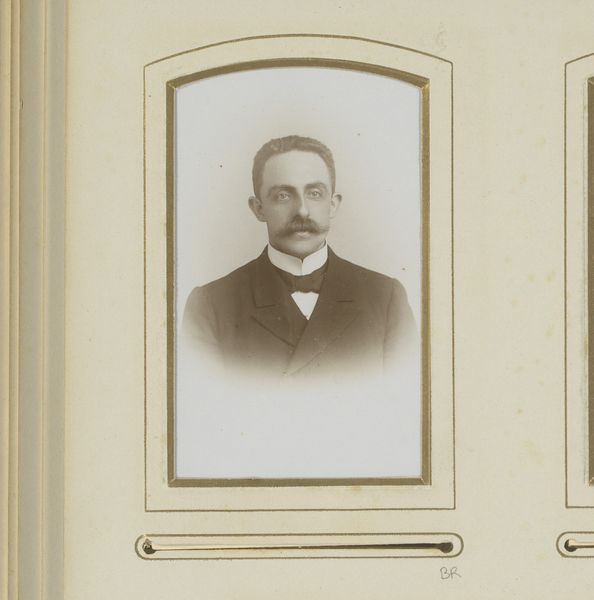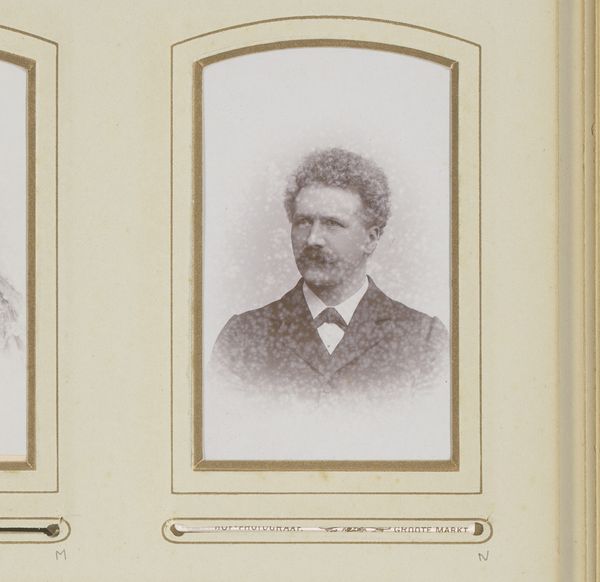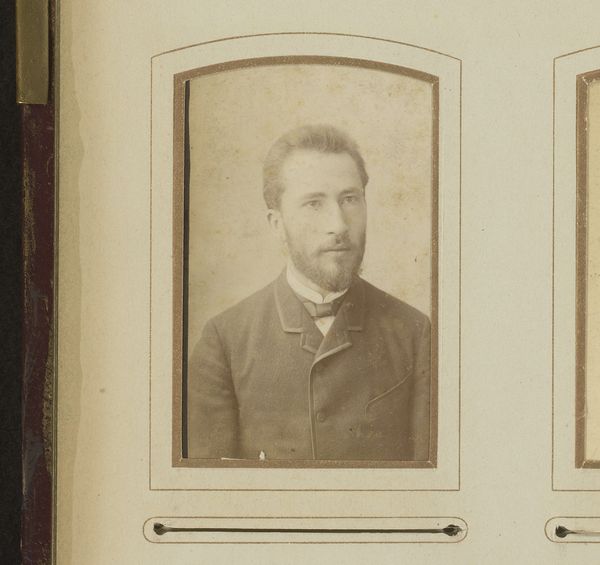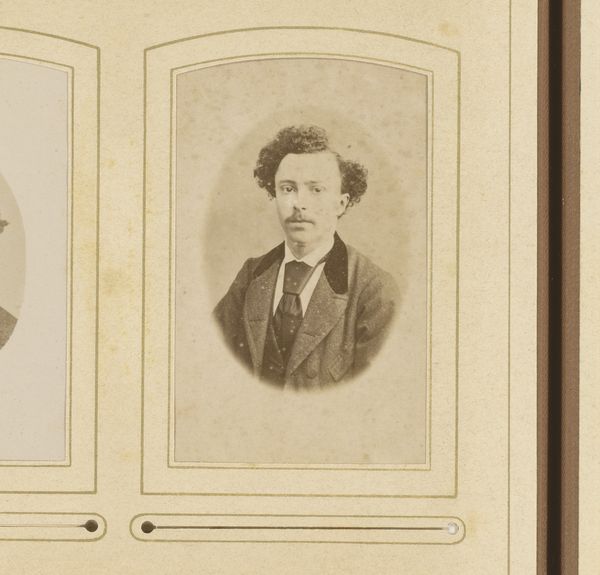
print, photography
#
portrait
#
aged paper
#
toned paper
# print
#
photography
#
earthy tone
#
underpainting
#
charcoal
Dimensions: height 84 mm, width 53 mm
Copyright: Rijks Museum: Open Domain
Editor: Here we have “Portret van een man met snor en vlinderstrik,” or Portrait of a Man with a Moustache and Bowtie, a photographic print by Franz Eiffert, dating between 1892 and 1911. There's something so wonderfully aged and evocative about its presentation. What do you see in this piece, considering its historical context? Curator: Well, considering the period, it speaks volumes about the emerging middle class and their aspiration to participate in visual culture. Photography became increasingly accessible, and portraits like these weren't just for the elite anymore. Look at his attire—the suit and bow tie were potent signifiers of respectability and social status. How do you think this image circulated in its time? Editor: That's a fascinating point! I imagine it was part of a family album, meant for private viewing and perhaps occasional display. It highlights the increasing importance of documenting personal histories and presenting a curated version of oneself. Curator: Precisely! The framing within the photograph itself, the carefully chosen pose – it’s all about crafting a particular narrative. The sitter isn’t merely having his picture taken; he's performing a specific role. Think about the role photography played in constructing national identity during this era. Does this portrait contribute to or challenge those dominant narratives? Editor: Hmm, that's a great question. Maybe both? On one hand, the subject seems to embody the bourgeois ideal, but there's also a certain individuality in his features, in his gaze. It's a more personal record, I suppose. I had not thought of it as a 'performance' for the camera! Curator: These portraits served multiple functions simultaneously: personal mementos, affirmations of social standing, and contributions to the larger visual archive. The study of seemingly simple portraits allows to dive deeper into understanding power dynamics and societal aspirations of a bygone era. Editor: It's interesting to see how much information is encoded in one image. Thank you; that's a really insightful way to think about it! Curator: And thank you for drawing out such keen observations. Analyzing art like this allows us to view the world through the lens of the past.
Comments
No comments
Be the first to comment and join the conversation on the ultimate creative platform.


